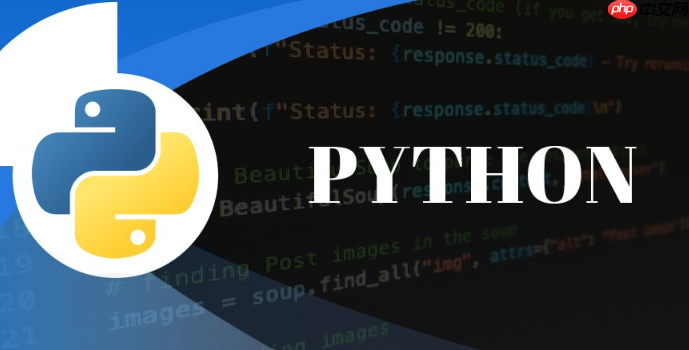答案:Python多线程适用于I/O密集型任务,通过合理拆分任务、使用queue.Queue或ThreadPoolExecutor管理线程池,并控制并发数以提升效率。

在Python中使用多线程处理大任务时,由于GIL(全局解释器锁)的存在,CPU密集型任务无法真正并行执行。但对I/O密集型任务(如网络请求、文件读写),多线程能显著提升效率。合理分解任务是关键,以下是实用的多线程任务分解策略和技巧。
不是所有任务都适合多线程。重点判断任务类型:
若任务混合了I/O和计算,可考虑线程负责I/O,进程负责计算。
任务不能太大也不能太小。粒度影响调度效率和资源占用:
立即学习“Python免费学习笔记(深入)”;
建议将任务拆分为数量略多于预期并发数的子任务,例如启动10个线程,准备15~20个任务块,利用队列动态分配。
通过queue.Queue可以轻松实现生产者-消费者模型,避免手动管理线程同步。
示例代码:
<font face="Courier New">import threading
import queue
import time
<p>def worker(task_queue):
while True:
try:
task = task_queue.get(timeout=2)</p><h1>模拟处理任务</h1><pre class='brush:python;toolbar:false;'> print(f"处理任务: {task}")
time.sleep(1) # 模拟I/O等待
task_queue.task_done()
except queue.Empty:
breakdef run_with_thread_pool(tasks, num_threads=4): q = queue.Queue() for task in tasks: q.put(task)
threads = []
for _ in range(num_threads):
t = threading.Thread(target=worker, args=(q,))
t.start()
threads.append(t)
for t in threads:
t.join()tasks = [f"Task-{i}" for i in range(20)] run_with_thread_pool(tasks, num_threads=5)
盲目创建大量线程可能导致系统卡顿或崩溃。应限制最大并发数:
使用concurrent.futures.ThreadPoolExecutor更简洁:
<font face="Courier New">from concurrent.futures import ThreadPoolExecutor
<p>def process_task(task):
time.sleep(1)
return f"完成: {task}"</p><p>with ThreadPoolExecutor(max_workers=5) as executor:
results = list(executor.map(process_task, tasks))</p><p>for r in results:
print(r)
</font>基本上就这些。掌握任务拆分逻辑、选择合适工具、控制并发规模,就能高效利用Python多线程处理批量I/O任务。关键是理解场景,不盲目上多线程。
以上就是Python多线程任务分解策略 Python多线程分解大任务的技巧的详细内容,更多请关注php中文网其它相关文章!

每个人都需要一台速度更快、更稳定的 PC。随着时间的推移,垃圾文件、旧注册表数据和不必要的后台进程会占用资源并降低性能。幸运的是,许多工具可以让 Windows 保持平稳运行。

Copyright 2014-2025 https://www.php.cn/ All Rights Reserved | php.cn | 湘ICP备2023035733号